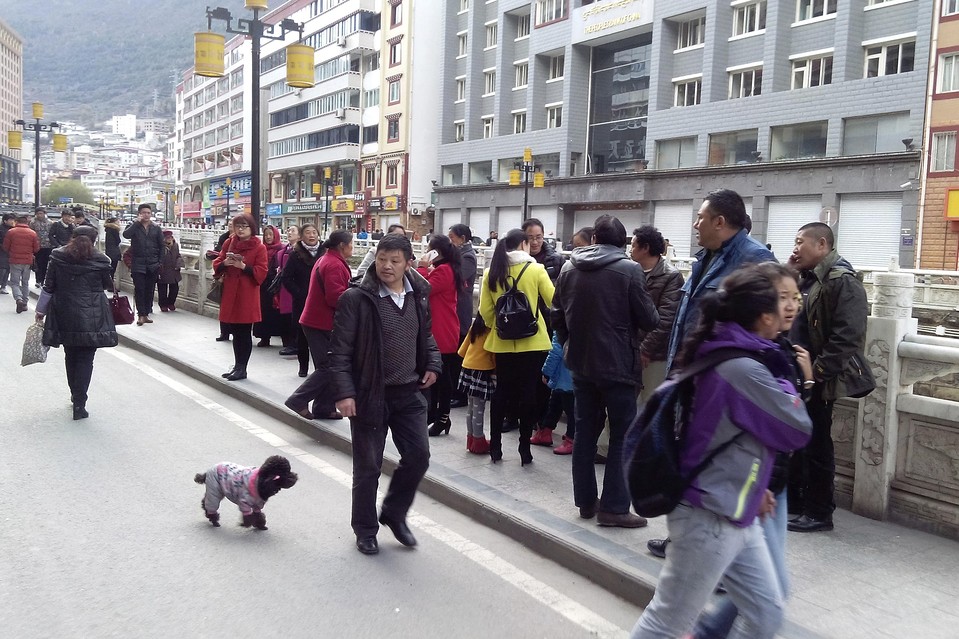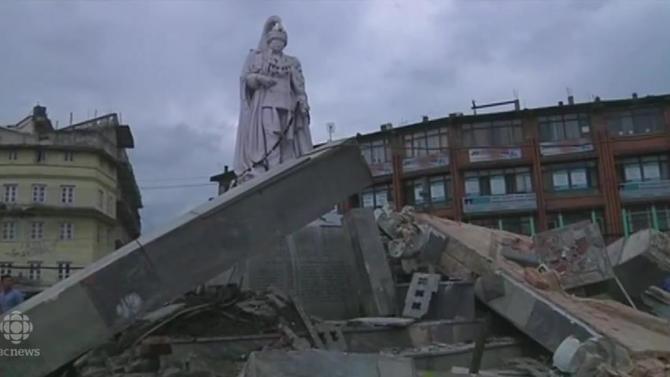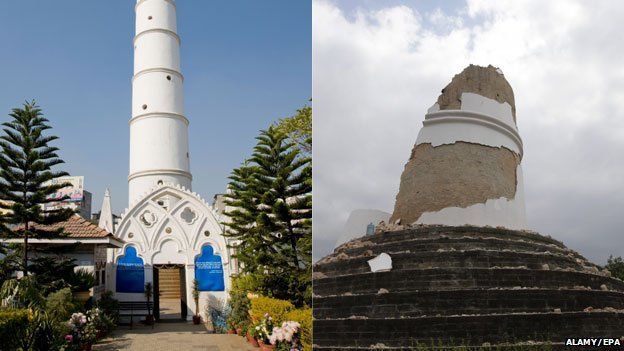Hawaii rattled by 4.5 magnitude earthquake as hurricanes near
Posted on August 8, 2014by The Extinction Protocol

August 2014 – HAWAII – The U.S. Geological Survey reports a magnitude-4.5 earthquake has rattled Hawaii’s Big Island, as two hurricanes rumbled toward the islands. The temblor struck on the north tip of the Big Island, about 7 miles from Waimea at 6:24 a.m. local time. The U.S. Geological Survey initially announced the quake was magnitude-4.3 and quickly upgraded it. Hawaii County Civil Defense Director Darryl Oliveira says there haven’t been any reports of damage. He said a moderate quake is “not uncommon” for Hawaii. A Waimea grocery store employee said the quake didn’t cause any apparent damage in the building and didn’t knock anything off shelves. Hurricane Iselle was on course to hit the Big Island Thursday night, and was being tailed by Hurricane Julio, which strengthened early Thursday into a Category 2 storm. –ABC News
Hawaii prepares for ‘extremely rare’ double storm hit
Posted on August 6, 2014by The Extinction Protocol

August 2014 – HAWAII - Hawaii is preparing for two major storm systems this week, beginning with Hurricane Iselle, which is expected to weaken to a tropical storm by the time it makes landfall on Thursday. Hurricane Julio is expected on Saturday, again after weakening into a tropical storm. Hawaii Public Radio’s Bill Dorman says residents and tourists are getting ready for the heavy rains, rough seas and 60 mph winds expected from the storms: “School officials across Hawaii County and Maui County have already cancelled classes for Thursday. The same day, the National Weather Service says a flash flood warning will cover the entire island chain. That includes the most populous island of Oahu … home to Honolulu, Pearl Harbor, and the tourist magnet of Waikiki Beach.” Honolulu’s Department of Emergency Management urges residents to have seven days’ worth of supplies on hand. “With Hawaii’s remoteness it could be as long as a week before a full disaster relief operation can be initiated,” the department says in a statement. Officials also encouraged residents to vote early in the state’s primary election, scheduled for Saturday, the Honolulu Star-Advertiser reports.
Hurricanes have struck the archipelago before, The Associated Press reports, but only rarely, and recent strikes have had little impact: The state was washed over by Hurricane Flossie in 2007, which caused 20-foot waves but very little damage. Hurricane Neki did minor damage to a marine national monument northwest of the islands in 2009. In 1992, Hurricane Iniki pummeled the island of Kauai, killing six people and causing estimated damages of $2.4 billion. Before that, the last recorded hurricane to hit Hawaii was the Kohala Cyclone in 1871. Hawaii is warm, so how does it manage to avoid most tropical weather? Weather Channel blogger Steve Lyons wrote in 2007 that the reason was wind shear: “The Tropical Upper Tropospheric Trough (called TUTT for short) rules the high levels of our weather atmosphere there and creates winds typically too fast for development of a hurricane and too fast for an approaching hurricane from the east to remain a hurricane. That is why quite a few remnant tropical circulations go by south, north, or occasionally through the islands, but rarely does a tropical storm or hurricane [reach them].” -NN
Posted on August 8, 2014by The Extinction Protocol

August 2014 – HAWAII – The U.S. Geological Survey reports a magnitude-4.5 earthquake has rattled Hawaii’s Big Island, as two hurricanes rumbled toward the islands. The temblor struck on the north tip of the Big Island, about 7 miles from Waimea at 6:24 a.m. local time. The U.S. Geological Survey initially announced the quake was magnitude-4.3 and quickly upgraded it. Hawaii County Civil Defense Director Darryl Oliveira says there haven’t been any reports of damage. He said a moderate quake is “not uncommon” for Hawaii. A Waimea grocery store employee said the quake didn’t cause any apparent damage in the building and didn’t knock anything off shelves. Hurricane Iselle was on course to hit the Big Island Thursday night, and was being tailed by Hurricane Julio, which strengthened early Thursday into a Category 2 storm. –ABC News
Hawaii prepares for ‘extremely rare’ double storm hit
Posted on August 6, 2014by The Extinction Protocol

August 2014 – HAWAII - Hawaii is preparing for two major storm systems this week, beginning with Hurricane Iselle, which is expected to weaken to a tropical storm by the time it makes landfall on Thursday. Hurricane Julio is expected on Saturday, again after weakening into a tropical storm. Hawaii Public Radio’s Bill Dorman says residents and tourists are getting ready for the heavy rains, rough seas and 60 mph winds expected from the storms: “School officials across Hawaii County and Maui County have already cancelled classes for Thursday. The same day, the National Weather Service says a flash flood warning will cover the entire island chain. That includes the most populous island of Oahu … home to Honolulu, Pearl Harbor, and the tourist magnet of Waikiki Beach.” Honolulu’s Department of Emergency Management urges residents to have seven days’ worth of supplies on hand. “With Hawaii’s remoteness it could be as long as a week before a full disaster relief operation can be initiated,” the department says in a statement. Officials also encouraged residents to vote early in the state’s primary election, scheduled for Saturday, the Honolulu Star-Advertiser reports.
Hurricanes have struck the archipelago before, The Associated Press reports, but only rarely, and recent strikes have had little impact: The state was washed over by Hurricane Flossie in 2007, which caused 20-foot waves but very little damage. Hurricane Neki did minor damage to a marine national monument northwest of the islands in 2009. In 1992, Hurricane Iniki pummeled the island of Kauai, killing six people and causing estimated damages of $2.4 billion. Before that, the last recorded hurricane to hit Hawaii was the Kohala Cyclone in 1871. Hawaii is warm, so how does it manage to avoid most tropical weather? Weather Channel blogger Steve Lyons wrote in 2007 that the reason was wind shear: “The Tropical Upper Tropospheric Trough (called TUTT for short) rules the high levels of our weather atmosphere there and creates winds typically too fast for development of a hurricane and too fast for an approaching hurricane from the east to remain a hurricane. That is why quite a few remnant tropical circulations go by south, north, or occasionally through the islands, but rarely does a tropical storm or hurricane [reach them].” -NN











 ENLARGE
ENLARGE



